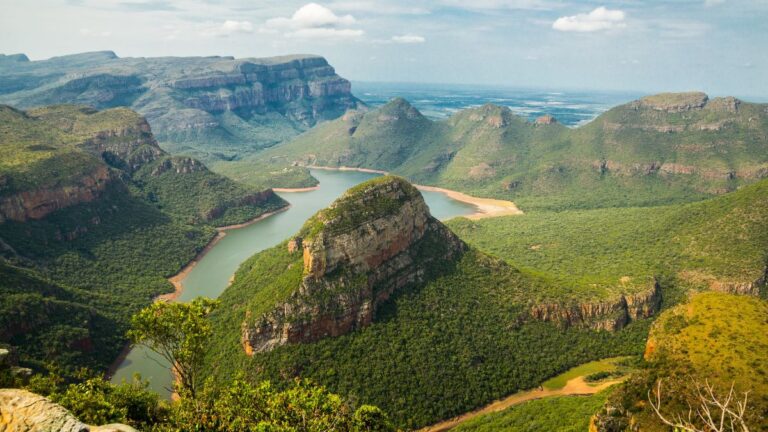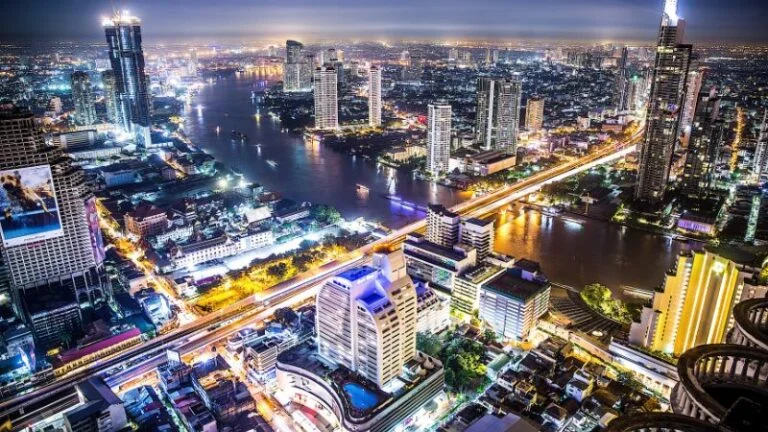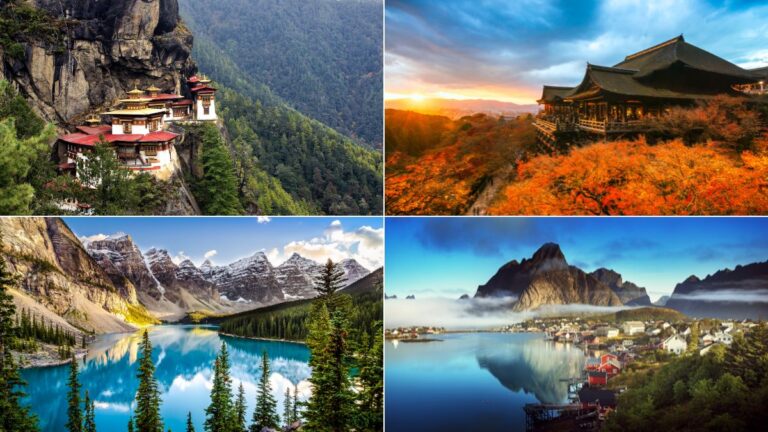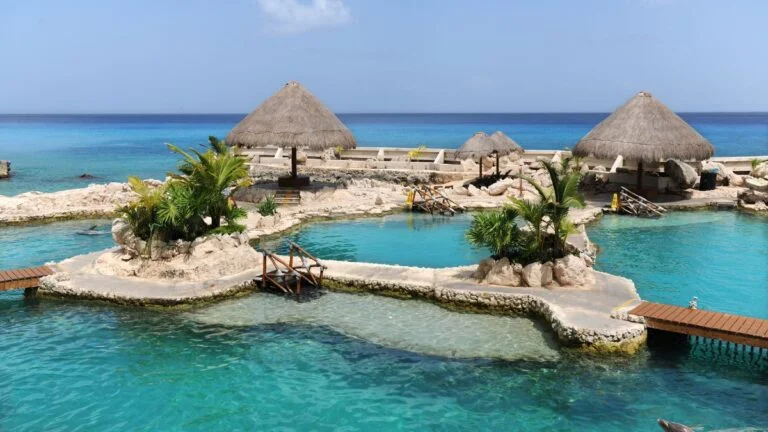Worst Time to Visit Alaska: Unveiling the Seasonal Challenges
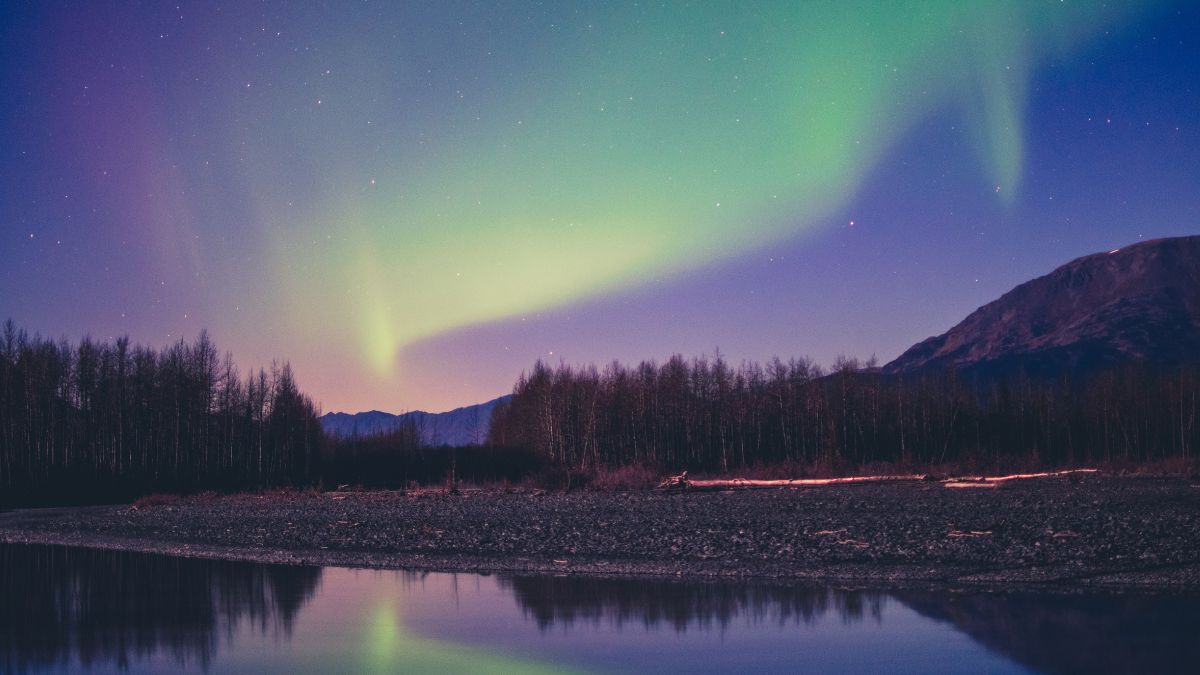
As participants in Amazon Associates and other programs, we earn from qualifying purchases. This comes at no additional cost to you. For more details, see our Affiliate Disclosure.
Alaska, known for its breathtaking landscapes, majestic wildlife, and rich cultural heritage, beckons adventurous souls from all corners of the globe. Its mesmerizing scenery paints an enticing picture of an idyllic wonderland. However, the uninitiated might not realize that this diverse and beautiful state, while inviting and awe-inspiring, can be just as daunting. Choosing the right time to visit is crucial to fully appreciate the Last Frontier’s grandeur, and it is equally important to understand when might not be the best time to plan a journey.
Contrary to the common perception that Alaska is a perennial winter wonderland, the state experiences stark seasonal variations, each with its unique challenges. The changes in climate and daylight hours across seasons can either augment or mar the Alaskan experience. Despite the allure of the Northern Lights or the thrill of dog sledding, the hardships during certain periods can outweigh the beauty and adventure that Alaska offers. The objective of this article is to unveil these seasonal challenges, thereby helping you understand the worst time to visit Alaska and ensure you’re well-prepared for your Arctic endeavor.
The Dark Side of Winter: Deep Freeze and Limited Daylight
Winter in Alaska may conjure images of a snowy wonderland complete with frost-laden trees, frozen lakes, and perhaps even the ethereal shimmer of the Northern Lights. However, this idyllic vision of the Alaskan winter fails to take into account some substantial challenges that can make this season a particularly difficult time to visit.
The cold, while expected, can be a formidable adversary for the unprepared visitor. Average temperatures can plummet below freezing and often dip to -30°F or lower in the more interior and northern parts of the state. Such extreme cold not only necessitates robust preparation and clothing, but it can also limit outdoor activities, making even the shortest excursions potentially dangerous for the ill-equipped traveler.
Coupled with the extreme cold is the issue of limited daylight, a phenomenon locals refer to as the “polar night.” In the depths of winter, the sun can rise as late as 10 am and set as early as 3 pm, with the northernmost parts experiencing periods of almost 24-hour darkness. This drastically reduced exposure to sunlight can lead to a condition known as Seasonal Affective Disorder (SAD), characterized by feelings of depression, lethargy, and general malaise.
The frigid temperatures and reduced daylight also affect wildlife viewing opportunities – a major attraction for many visitors. Many Alaskan animals hibernate or become less active during the winter months, making them more difficult to spot.
Lastly, winter storms can cause unexpected travel disruptions. Snow and ice can render roads treacherous or impassable, leading to cancelled flights and road closures. While winter sports enthusiasts and aurora chasers may find the Alaskan winter appealing, these various challenges can make the season a less than ideal time for many to visit.
Summer Solstice: The Unexpected Downsides
The summer season in Alaska, particularly around the Summer Solstice, can seem like the perfect antidote to its harsh winters. With warm temperatures, blooming landscapes, abundant wildlife, and nearly 24 hours of daylight known as the “midnight sun,” summer is a popular time to visit. However, it is worth noting that even this seemingly idyllic period comes with its own unique set of challenges.
The phenomenon of the midnight sun, while a novel experience, can pose unexpected difficulties. The constant daylight can disrupt sleep cycles, leading to symptoms of insomnia and disorientation, particularly for those unaccustomed to such conditions. It’s not uncommon for first-time visitors to find themselves wide awake at what feels like the middle of the day, only to realize it’s actually midnight. Blackout curtains and eye masks often become essential items for ensuring a good night’s rest.
In terms of wildlife, the bountiful summer months see a rise in insect populations, particularly mosquitoes. In some areas, these pests can be quite aggressive, necessitating the use of insect repellent and appropriate clothing to protect against bites. Likewise, bear activity increases during the summer, which, while thrilling for wildlife enthusiasts, also calls for heightened safety precautions during outdoor activities.
Summertime also ushers in peak tourism season in Alaska. The increased visitor influx can lead to crowded attractions, fully booked accommodations, and higher prices. Additionally, popular destinations and trails can suffer from overcrowding, detracting from the pristine wilderness experience that many seek in Alaska.
Lastly, while summer temperatures in Alaska are generally mild and pleasant, heatwaves are not unheard of. These can exacerbate wildfire risks, which not only pose a direct safety concern but can also impact air quality and visibility, tainting the otherwise stunning Alaskan vistas.
While summer is a generally favorable time to explore the Last Frontier, being mindful of these potential challenges can enhance your overall experience and safety.
Spring Thaw: The Dangers of Breakup Season
As winter releases its icy grip on Alaska, the arrival of spring heralds a period of transformation. Snow and ice begin to melt, rivers and lakes break free of their winter freeze, and the flora and fauna start to emerge from their winter slumber. This period, commonly referred to by locals as the “breakup season,” typically occurs from April to June. While this season can bring a sense of renewal and anticipation for the warmer months ahead, it also presents unique challenges that can make it a difficult time for visitors.
One of the most significant issues during breakup season is the rapid melting of snow and ice, which can lead to extensive flooding. This is particularly true in regions near rivers and creeks, where ice jams can cause water levels to rise rapidly and unexpectedly. These floods can render roads impassable, disrupt transportation, and pose significant safety risks.
Moreover, as the accumulated snow begins to melt, it can create slushy, muddy, and generally unpleasant conditions in urban and wilderness areas alike. Hiking trails can become muddy and slippery, making them difficult to navigate and potentially increasing the risk of injuries. These conditions can also lead to the closure of certain outdoor attractions and trails.
The thawing process also has implications for wildlife viewing. Many animals are still emerging from hibernation or returning from their winter habitats, making them less visible during early spring. Similarly, the receding snow reveals the winter’s accumulation of litter and waste, which can detract from the natural beauty of the landscape.
In terms of weather, spring in Alaska can be unpredictable, with temperatures fluctuating widely and sudden snowstorms even as late as May. This erratic weather can pose difficulties in planning and packing for a trip.
While the breakup season signals the end of the long, harsh winter, its unique challenges can make it a less favorable time to visit Alaska. Understanding these challenges can, however, aid in better trip planning and expectation setting.
Fall in Alaska: Unpredictable Weather and Wildlife Hibernation
As the vibrant colors of summer begin to fade, Alaska enters its brief but dynamic fall season, typically from September to mid-October. Fall ushers in a kaleidoscope of colors as the landscape transforms, with vibrant hues of yellow, orange, and red painting the hills and valleys. This visually stunning period, however, is accompanied by unpredictability and transition that can present difficulties for travelers.
One of the key challenges in this season is the unpredictable weather. As Alaska moves from the mild summer to the harsh winter, weather patterns can fluctuate greatly. It’s not uncommon to experience a pleasant, sunny day, followed by snowfall or freezing temperatures. This unpredictability can make packing and planning outdoor activities challenging, as conditions can change rapidly.
In addition to the weather, fall marks the beginning of hibernation for many Alaskan animals. The previously active and visible wildlife of the summer months start to become less prominent. Bears, a major attraction for many visitors, begin to retreat to their dens for their winter sleep. Other animals also reduce their activity levels in preparation for the winter, making wildlife spotting more hit-or-miss.
Daylight hours, too, start to diminish rapidly during the fall season. While not as extreme as the polar nights of winter, the reduced daylight can limit the time available for outdoor activities and sightseeing.
Finally, just as in spring, the transition into the winter season can impact the state’s infrastructure. Preparation for winter often involves road maintenance and closures, potentially causing disruptions to travel plans. Moreover, many tourist facilities and services start to wind down after the busy summer season, resulting in fewer options for accommodations, tours, and activities.
Transportation Troubles: Navigating Alaskan Roads and Skies
Alaska, with its expansive wilderness and varied topography, poses unique challenges for transportation, further amplified by the state’s extreme weather conditions. Depending on the time of year, visitors may encounter a range of transportation issues that can disrupt travel plans and limit accessibility to different regions of the state.
Winter in Alaska brings with it heavy snowfall and icy conditions, making road travel hazardous. Many roads, especially those in rural or remote areas, may be closed or difficult to navigate. Even the state’s major highways can be affected by winter storms, causing delays or cancellations of travel plans.
The Alaskan skies can be equally treacherous during the winter. Frequent snowstorms and low visibility often lead to flight delays and cancellations, making air travel unreliable. Furthermore, many of Alaska’s smaller communities are primarily accessed by small aircraft, making them particularly susceptible to winter weather conditions.
During spring, the rapid melting of ice and snow, known as the breakup season, can lead to flooding, creating additional road hazards and potentially washing out roads altogether. Moreover, potholes become a common sight as the frozen ground thaws and roads begin to break up.
In summer and fall, while generally more accessible, Alaska can still present transportation challenges. Wildfires during hotter, drier periods can result in road closures and impact air quality, affecting flight schedules. Additionally, the influx of tourists in the summer can lead to crowded roads and fully booked flights, causing further inconvenience.
Public transportation within cities or between attractions can also be limited, particularly outside of peak tourist season. Many parts of Alaska are remote, and services like rideshares, taxis, or buses may be sparse or nonexistent.
Tourism Traffic: Overcrowding in Peak Seasons
For many travelers, the allure of Alaska lies in its expansive wilderness, serene landscapes, and opportunities for unique wildlife encounters. However, during peak tourism seasons, the experience can be quite different. Increased visitor numbers can lead to overcrowding at popular attractions, higher prices, and a diminished sense of solitude and tranquility that the Alaskan wilderness is famed for.
The peak tourism season in Alaska typically spans from mid-May to mid-September, when the state’s weather is most favorable. During these months, popular destinations such as Denali National Park, Kenai Fjords, and the coastal city of Seward can see a significant influx of tourists. This surge in visitors can result in crowded trails, congested roads, and fully booked tours and accommodations, detracting from the overall experience.
Moreover, the rise in visitor numbers during peak season leads to increased demand for services, resulting in higher prices for accommodations, car rentals, and other travel-related costs. For those traveling on a budget, this peak season surge can make a trip to Alaska considerably more expensive.
Cruise ships are another significant contributor to summer overcrowding. Alaska’s cruise season coincides with the summer months, and the arrival of a cruise ship can temporarily swell the population of small coastal towns, overwhelming local facilities and attractions.
Lastly, the high traffic during peak seasons has implications for the local environment. The increased human activity can disturb wildlife and contribute to the wear and tear on natural areas, particularly at popular hiking and camping spots.
While summer offers favorable weather and increased wildlife activity, prospective visitors should weigh these advantages against the challenges presented by increased tourism traffic. Traveling during shoulder seasons or venturing off the beaten path can provide alternative ways to experience Alaska’s beauty while avoiding the summer crowds.
Unforeseen Challenges: The Impact of Climate Change on Alaska’s Seasons
As we delve deeper into the 21st century, the impacts of climate change are becoming increasingly evident, and Alaska, often referred to as “ground zero for climate change,” is no exception. The changing climate poses unforeseen challenges that can affect the timing and quality of a visit to the state.
Alaska is warming at twice the rate of the global average. This rapid warming has led to a host of changes, including shorter winters, hotter and drier summers, less reliable snowfall, and more frequent and intense wildfires. These changes can affect everything from the state’s iconic glaciers and wildlife to outdoor recreation opportunities and transportation infrastructure.
Winters are becoming milder, and snowfall is less predictable, which can affect winter sports such as skiing, snowboarding, and dog sledding. Warmer temperatures also mean that ice roads—essential transportation links in some parts of the state—are becoming less reliable.
On the other end of the spectrum, summers are becoming hotter and drier. This not only increases the risk of wildfires, which can disrupt travel and reduce air quality, but also can lead to drought conditions that impact wildlife and the overall health of the environment.
Sea ice loss is another significant concern. Decreased sea ice affects the state’s unique marine ecosystems and can have implications for wildlife viewing, particularly for species like polar bears, walruses, and seals that rely on sea ice for their survival.
Climate change can also increase the frequency and intensity of extreme weather events, including storms, heavy rains, and flooding, leading to further potential disruptions in travel plans.
Understanding these climate change impacts is crucial for travelers, not only in terms of how they might affect a trip, but also in terms of how tourism contributes to these issues and how visitors can minimize their environmental impact. As climate change continues to alter Alaska’s seasons, it’s becoming an increasingly important factor to consider in travel planning.
Tips to Plan Your Visit: Weighing the Pros and Cons
Planning a trip to Alaska requires a clear understanding of the diverse range of seasonal challenges, along with an appreciation of the state’s vast size and variable climates. From seasonal shifts that can impact travel and tourism to the effects of climate change on this far-flung state, having a grasp of the potential hurdles can aid in crafting an unforgettable Alaskan adventure. Once you’ve weighed these pros and cons, here are some tips to help in your planning:
- Identify Your Interests: Your interests should dictate the time of your visit. If you’re a wildlife enthusiast, the summer season, despite its potential drawbacks, offers abundant opportunities for wildlife spotting. For those keen on winter sports or viewing the Northern Lights, the cold and dark winter season might be ideal.
- Research the Climate and Daylight Hours: The climate and amount of daylight vary greatly across the state and throughout the year. Understanding these variations will help you pack appropriately and plan your activities.
- Consider Travel Insurance: Given the potential for weather-related disruptions, having travel insurance can provide peace of mind and financial protection.
- Book in Advance: If you plan to visit during the peak summer season, it’s advisable to book accommodations and activities well in advance due to the influx of tourists.
- Minimize Environmental Impact: As a visitor, it’s important to respect Alaska’s pristine environments. This includes respecting wildlife, sticking to marked trails, and following the principles of Leave No Trace.
- Understand Alaska’s Size: The vast size of Alaska means that getting around can take longer than anticipated. Plan your itinerary with this in mind to ensure ample time for travel between destinations.
The Alaskan Local’s Perspective: When Not to Visit
Alaskan locals have a deep understanding of their state’s intricacies, gained from living through its varying seasons year after year. Their perspective on when not to visit can be invaluable for travelers looking for an authentic and enjoyable Alaskan experience.
From a local’s standpoint, the high summer season—while boasting warm temperatures and nearly 24 hours of daylight—can be less than ideal due to the influx of tourists, inflated prices, and sometimes overwhelmingly busy tourist spots. While the beauty of Alaska in full bloom is undeniable, the crowds and higher costs may detract from the overall experience.
On the flip side, the deep winter, especially from December through February, can also be a challenging period. The harsh cold, heavy snowfall, and limited daylight make everyday life more difficult and limit outdoor activities. Locals often caution against this period for tourists, especially those not used to such extreme winter conditions.
Breakup season, typically in April and May, is another period locals often advise against for tourism. The melting snow turns landscapes into slushy mud, making hiking and other outdoor activities challenging. Flooding from melting ice can also pose hazards and disrupt transportation.
Balancing Risks and Rewards: Making an Informed Decision About Your Alaskan Adventure
Determining the optimal time for an Alaskan trip requires a careful balance of risks and rewards. Each season brings its own unique experiences and challenges, and understanding these dynamics can help ensure an enriching and safe adventure. The decision about when to visit will largely depend on personal interests, weather preferences, tolerance for potential challenges, and the desire to experience Alaska in its various seasonal transformations.
Winter can be magical, with opportunities to view the Northern Lights, participate in winter sports, and witness the serene beauty of the snow-covered landscape. However, this season also presents challenges such as extreme cold, limited daylight, and potential transportation disruptions.
Summer offers warm temperatures, extended daylight hours, and vibrant wildlife activity. But these attractive conditions also bring crowded tourist spots, higher prices, and an increased risk of wildfires.
The shoulder seasons, spring and fall, provide a middle ground. They typically see fewer tourists and offer unique experiences, like the springtime ‘breakup’ or fall’s dramatic foliage. Yet, these seasons also bear their own set of challenges, including unpredictable weather and transitioning wildlife patterns.
Understanding and weighing these factors is key to making an informed decision about when to embark on your Alaskan journey. It’s important to do thorough research, consider your personal preferences and tolerance for potential difficulties, and prepare as much as possible for the challenges you might encounter.
No matter when you choose to visit, Alaska’s majestic landscapes, abundant wildlife, and unique cultural experiences make it a rewarding destination. Your Alaskan adventure awaits, whether under the midnight sun, amid fall’s fiery colors, during the tranquil winter, or as spring breathes life back into the land.


